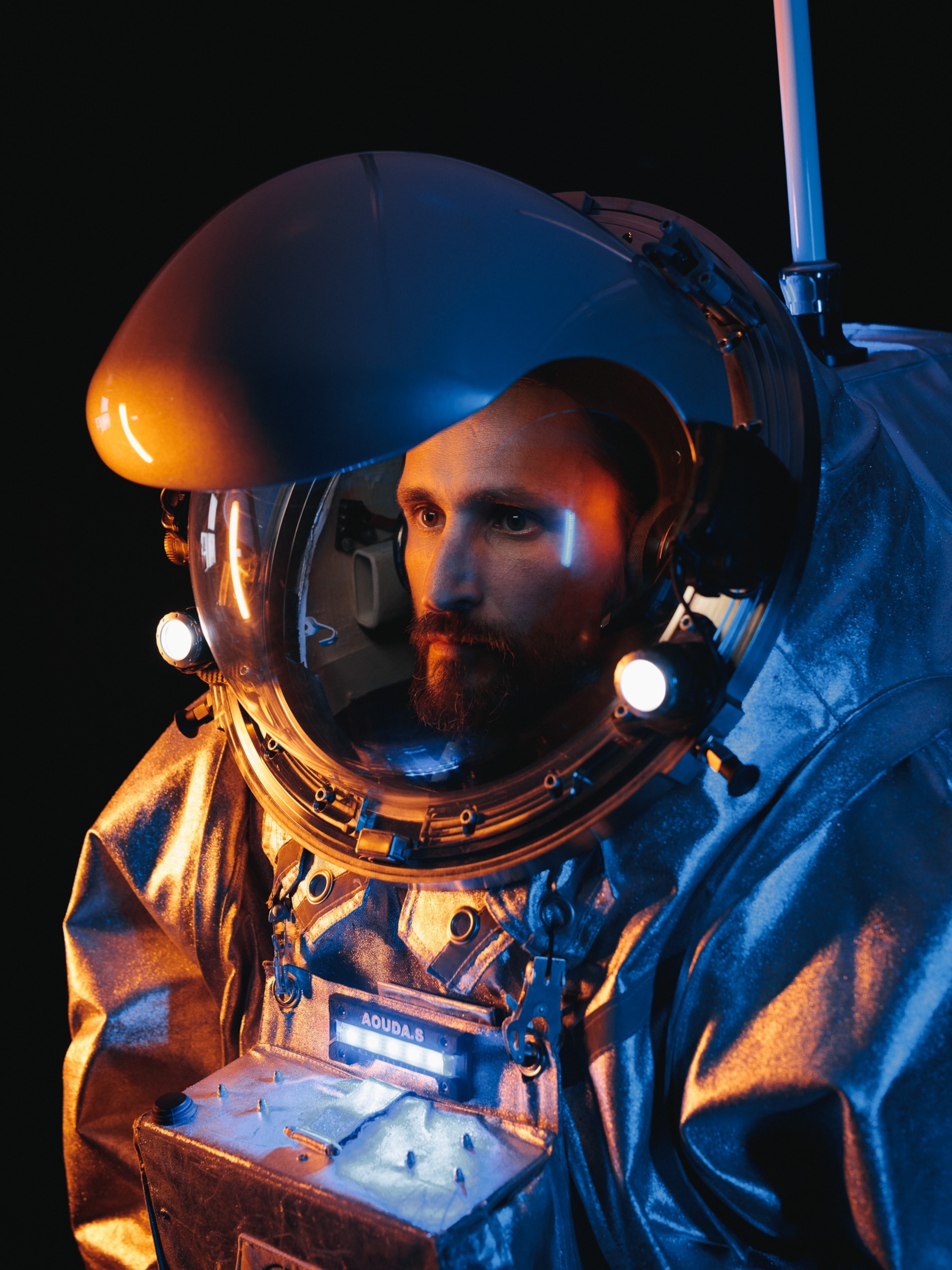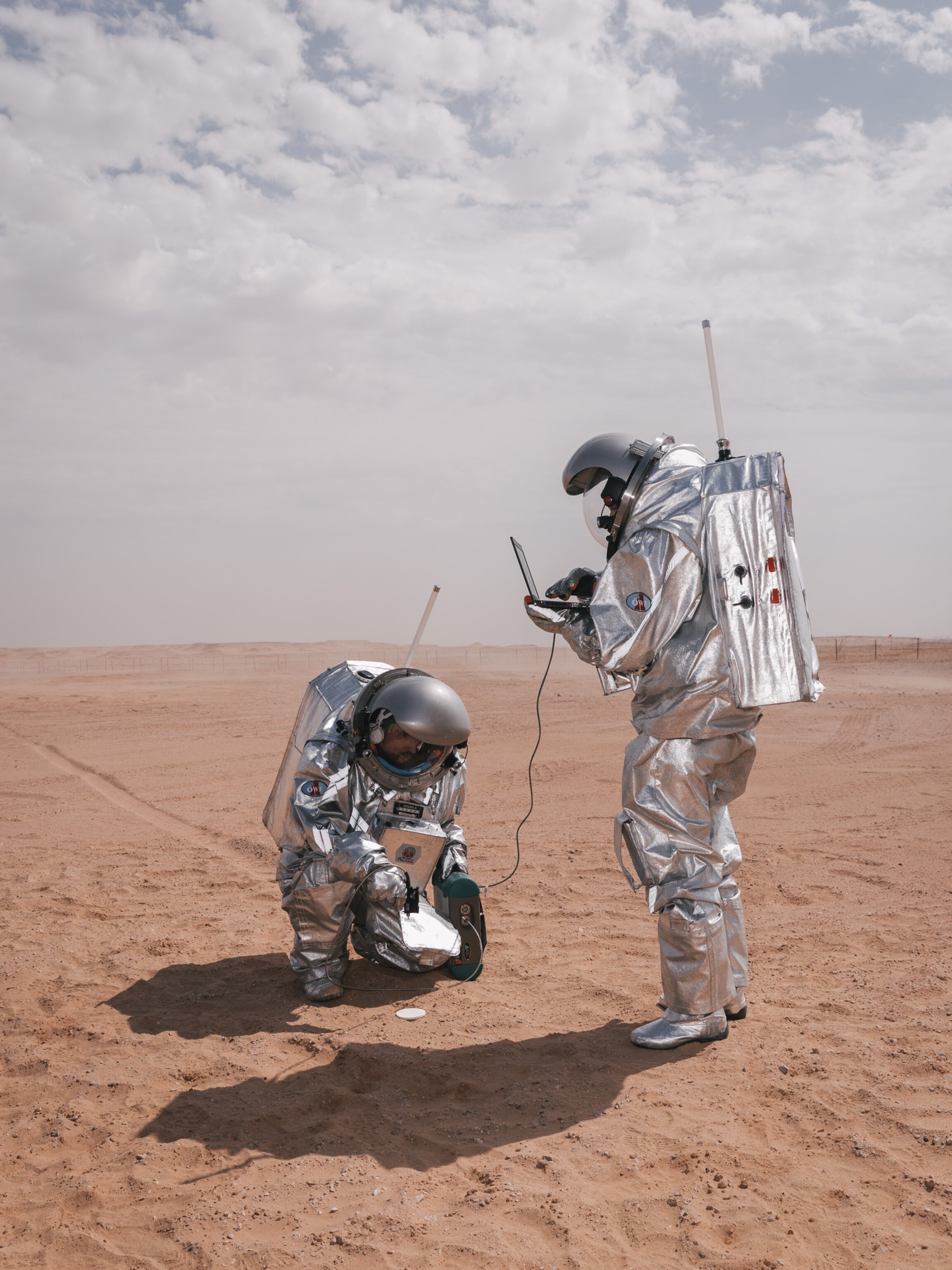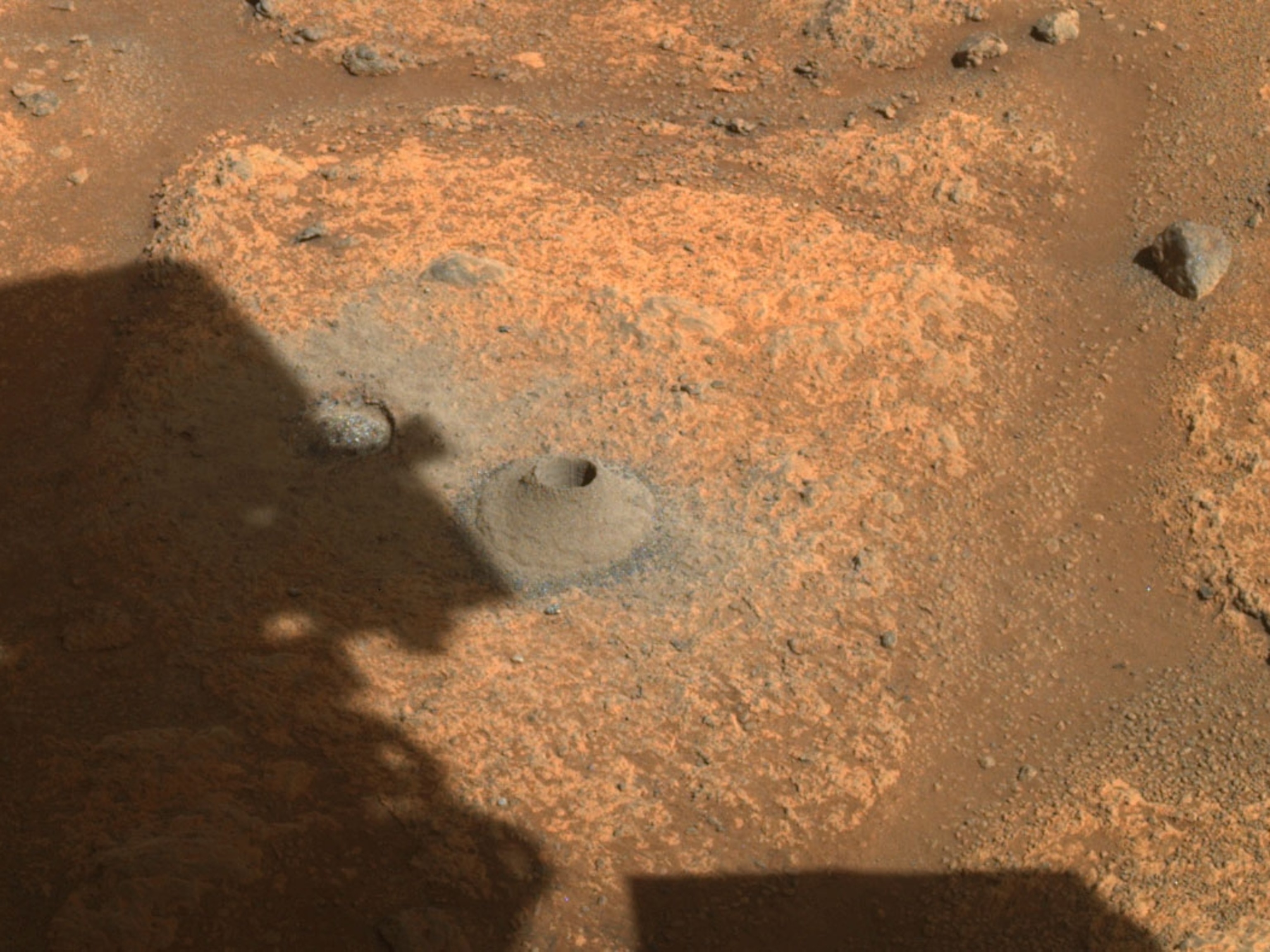On an average day, you might find Kartik Kumar in the Netherlands, where he's finishing up his Ph.D. in aerospace engineering at Delft University of Technology or tending to his startup company. But in February 2018, Kumar was standing on the surface of Mars.
Well, almost. After intensive training, Kumar became one of six “analog astronauts” who volunteered for a month-long simulated mission to the red planet called AMADEE-18. The project's main goal: to test the tools, procedures, and mental and physical challenges that a real future Mars mission might face.









The more weak points the team can identify, the better. Screwing up on Earth is nothing compared to screwing up on Mars, a frozen desert with unbreathable air that swirls with toxic dust. Even the smallest mistake there could be lethal.
“When you've got a person in a spacesuit, [it's fascinating] how difficult some things can be—even the simplest of things, like pushing a button on a science experiment, or standing in sand,” says Royal Air Force squadron leader Bonnie Posselt, a Ph.D. student at the U.S. Air Force Research Laboratory who served as AMADEE-18's medical officer.


Standing in the deserts of Oman, wearing a 99-pound silver spacesuit that glimmered in the sun, Kumar found that the suit's exoskeleton restrained him and dulled his senses. He couldn't hear anything but the radio crackle in his headphones; sweat clung to his body. There, out beyond the glassy curve of his helmet, lay miles and miles of forbidding red dust. For a moment, Kumar felt as if he had jumped across time and space.
“Those are really weird sensations,” Kumar says. “Your senses are embedded—your thoughts are embedded—in the feeling of being on Mars.”
From Innsbruck to Olympus Mons
Austrian photographer Florian Voggeneder also trained for the mission and participated as part of AMADEE-18's field crew so he could fully document the effort.
Nearly four years ago, Voggeneder started out wanting to make a tongue-in-cheek ode to Austria's amateur space enthusiasts, playing off of the country's relative lack of a spacefaring legacy. It's been more than 25 years since Austria's sole astronaut, Franz Viehböck, flew aboard the Russian space station Mir. But his approach took a more serious turn when he found out about a private group called the Austrian Space Forum, or OeWF for short.

“It was very sincere with its boots-on-the-ground approach,” Voggeneder says. “It evoked my curiosity.”
Since 1997, the OeWF has staged 12 analog Mars missions all over the world, including the highest-altitude one ever staged, high in Austrian ice caves. Its staff regularly publishes scientific papers. Observers from NASA and the European Space Agency keep tabs on its findings.
Your senses are embedded—your thoughts are embedded—in the feeling of being on Mars.Kartik Kumar, OeWF Analog Astronaut
“There's a specific niche where we can do low-cost missions with a high output,” says OeWF director Gernot Grömer, who has served as field commander or mission support head for 11 AMADEE missions. “There was a NASA JSC [Johnson Space Center] meeting a couple years ago where people had a problem they couldn't solve, and somebody stood up and said, I heard about this weird Austrian group doing a similar thing, let's ask the Austrians.
“That's the highest reference for me,” Grömer adds. “I'm very proud of this.”
Life on Mars (on Earth)
A real trip to Mars would take a nine-month cruise through deep space, but the AMADEE-18 mission flew commercial from Munich to Muscat, Oman's capital. From there, a chartered plane took the crew deep into southern Oman's Dhofar region. Once they got off the buses at Kepler Station, their temporary base, they were the only humans for miles.

Factors from the isolation to the red sand contribute to what the OeWF calls “mission fidelity,” or how real the simulation feels. Mission support back on “Earth”—a building in Innsbruck, Austria—would meticulously plan out the astronauts' schedules down to the quarter hour. All communications to and from Austria ran on a 10-minute delay to simulate the lag time between Earth and Mars.
Each day, two analog astronauts ventured miles from Kepler Station for up to six hours at a time, testing equipment that could someday be used to find life on Mars. The duo was clad in OeWF's pride and joy: a meticulously designed spacesuit simulator named Aouda.X.
The three-layered exoskeleton strives for accuracy, down the annoyances. The suit can take up to three hours to put on and an hour to take off. Despite its ventilation system, you can sweat so much wearing it, it's possible to drink half a gallon in the field and not have to use the bathroom once.
“It's more difficult to move; it's like [lifting] a five-kilo banana,” says AMADEE-18 analog astronaut Carmen Köhler.
All these simulated inconveniences yield real insights for future Mars suits. On an earlier AMADEE mission, the crew heard an astronaut in the field grunting in anguish over the radio. Beads of sweat had gathered on his nose, but because he was wearing a helmet, he couldn't dab them off. Enter one of the OeWF's innovations: the “razzle-frazzle device,” a strip of sweat-absorbing Velcro on the helmet's inner wall.
The commitment to fidelity extended to Voggeneder. As a member of the field crew, he had to ask mission support to change his schedule for time to photograph. He'd receive formal approval days later, just like a request to change a real mission's flight plan.


Though participants never lose sight of the fact that they're on Earth, the experience sticks with them. The more Voggeneder recalls his time at AMADEE-18, the more he refers to mission support in Austria as “Earth” and Oman as “Mars.”
“We were in this kind of limbo state,” he says.
Art on the moon—and humans on Mars
Now, as Oman's sands swallow up the former AMADEE-18 site, Grömer's team is busy planning a return to the “red planet.” In October 2020, six OeWF analog astronauts will spend four weeks living deep inside Israel's Negev desert. The mission's designers are even considering separating the astronauts from the on-site support crew, to make the isolation even more extreme—and more realistic.
In the meantime, scientists are studying how AMADEE-18's test instruments performed, and their findings will be published in a future issue of the journal Astrobiology.
As for Voggeneder, he still has space on his mind, and he's brainstorming how he could contribute to a future art installation on the moon. “What does it take to be home somewhere?” he asks. “You could be a spacefarer, but once you decide to stay somewhere, you would have to introduce your own habits, your own rituals, your own culture.”
AMADEE-18's other crew members remain convinced that when it comes to Mars, it's not a matter of if humans will ever truly have to ponder these questions—it's a matter of when.
“The first person to walk on Mars is already born,” says AMADEE-18 analog astronaut João Lousada. “If I had to tell them something, I would definitely tell them to remember all the effort it took to get there—to not take things for granted, but also to enjoy. This is one of the greatest achievements we can get in our lifetimes.”

Related Topics
You May Also Like
Go Further
Animals
- Octopuses have a lot of secrets. Can you guess 8 of them?
- Animals
- Feature
Octopuses have a lot of secrets. Can you guess 8 of them? - This biologist and her rescue dog help protect bears in the AndesThis biologist and her rescue dog help protect bears in the Andes
- An octopus invited this writer into her tank—and her secret worldAn octopus invited this writer into her tank—and her secret world
- Peace-loving bonobos are more aggressive than we thoughtPeace-loving bonobos are more aggressive than we thought
Environment
- Listen to 30 years of climate change transformed into haunting musicListen to 30 years of climate change transformed into haunting music
- This ancient society tried to stop El Niño—with child sacrificeThis ancient society tried to stop El Niño—with child sacrifice
- U.S. plans to clean its drinking water. What does that mean?U.S. plans to clean its drinking water. What does that mean?
- Food systems: supporting the triangle of food security, Video Story
- Paid Content
Food systems: supporting the triangle of food security - Will we ever solve the mystery of the Mima mounds?Will we ever solve the mystery of the Mima mounds?
History & Culture
- Strange clues in a Maya temple reveal a fiery political dramaStrange clues in a Maya temple reveal a fiery political drama
- How technology is revealing secrets in these ancient scrollsHow technology is revealing secrets in these ancient scrolls
- Pilgrimages aren’t just spiritual anymore. They’re a workout.Pilgrimages aren’t just spiritual anymore. They’re a workout.
- This ancient society tried to stop El Niño—with child sacrificeThis ancient society tried to stop El Niño—with child sacrifice
- This ancient cure was just revived in a lab. Does it work?This ancient cure was just revived in a lab. Does it work?
Science
- The unexpected health benefits of Ozempic and MounjaroThe unexpected health benefits of Ozempic and Mounjaro
- Do you have an inner monologue? Here’s what it reveals about you.Do you have an inner monologue? Here’s what it reveals about you.
- Jupiter’s volcanic moon Io has been erupting for billions of yearsJupiter’s volcanic moon Io has been erupting for billions of years
- This 80-foot-long sea monster was the killer whale of its timeThis 80-foot-long sea monster was the killer whale of its time
Travel
- How to plan an epic summer trip to a national parkHow to plan an epic summer trip to a national park
- This town is the Alps' first European Capital of CultureThis town is the Alps' first European Capital of Culture
- This royal city lies in the shadow of Kuala LumpurThis royal city lies in the shadow of Kuala Lumpur
- This author tells the story of crypto-trading Mongolian nomadsThis author tells the story of crypto-trading Mongolian nomads








